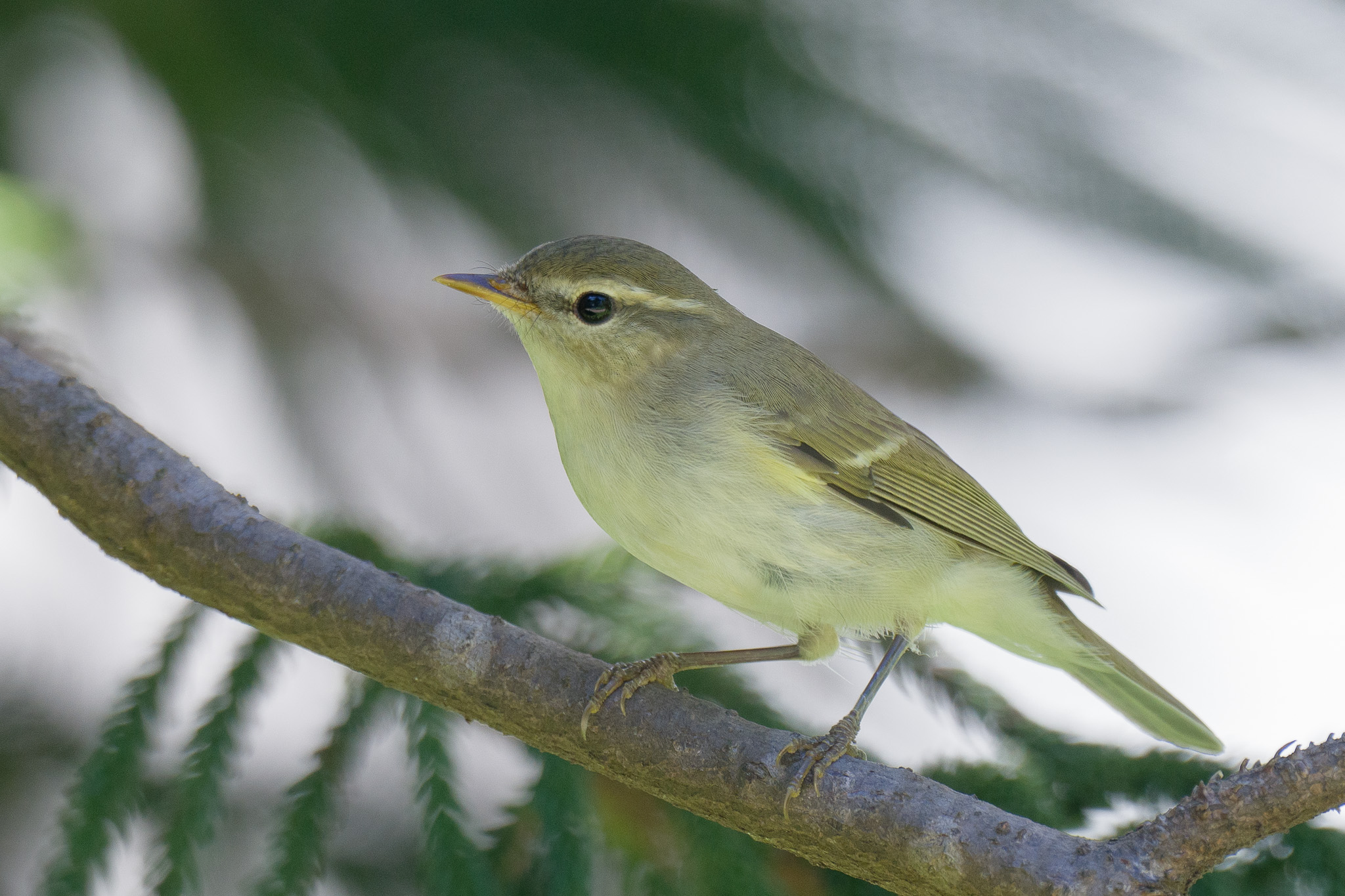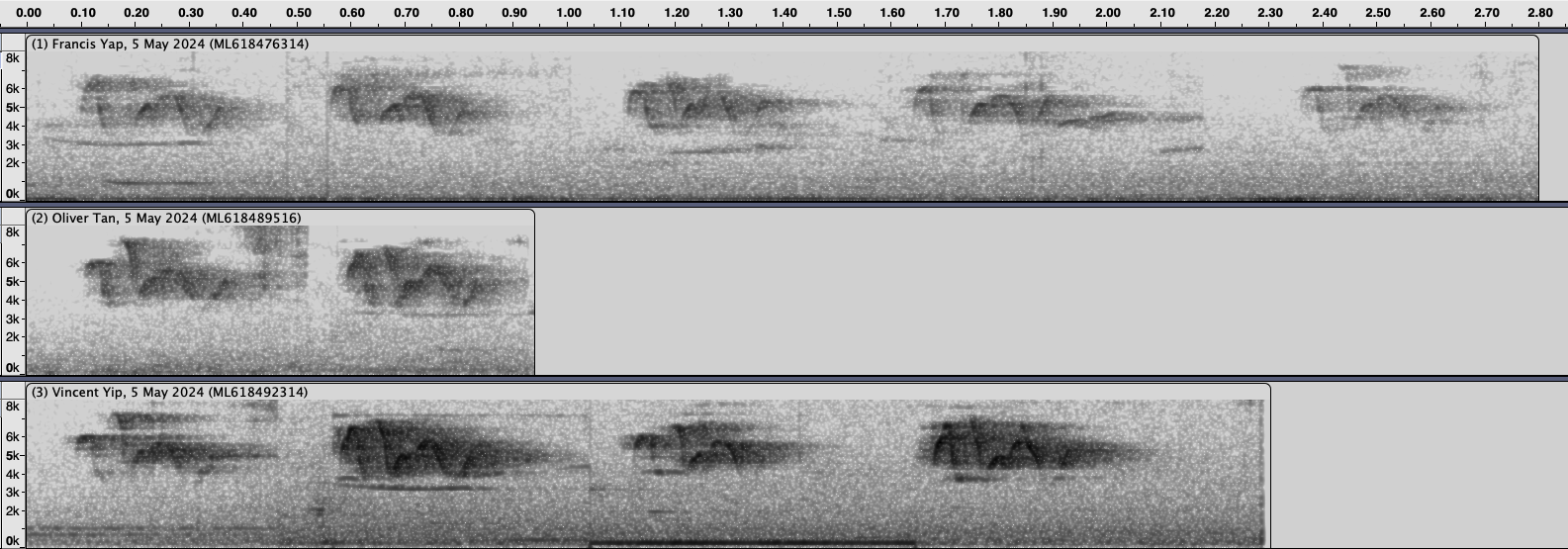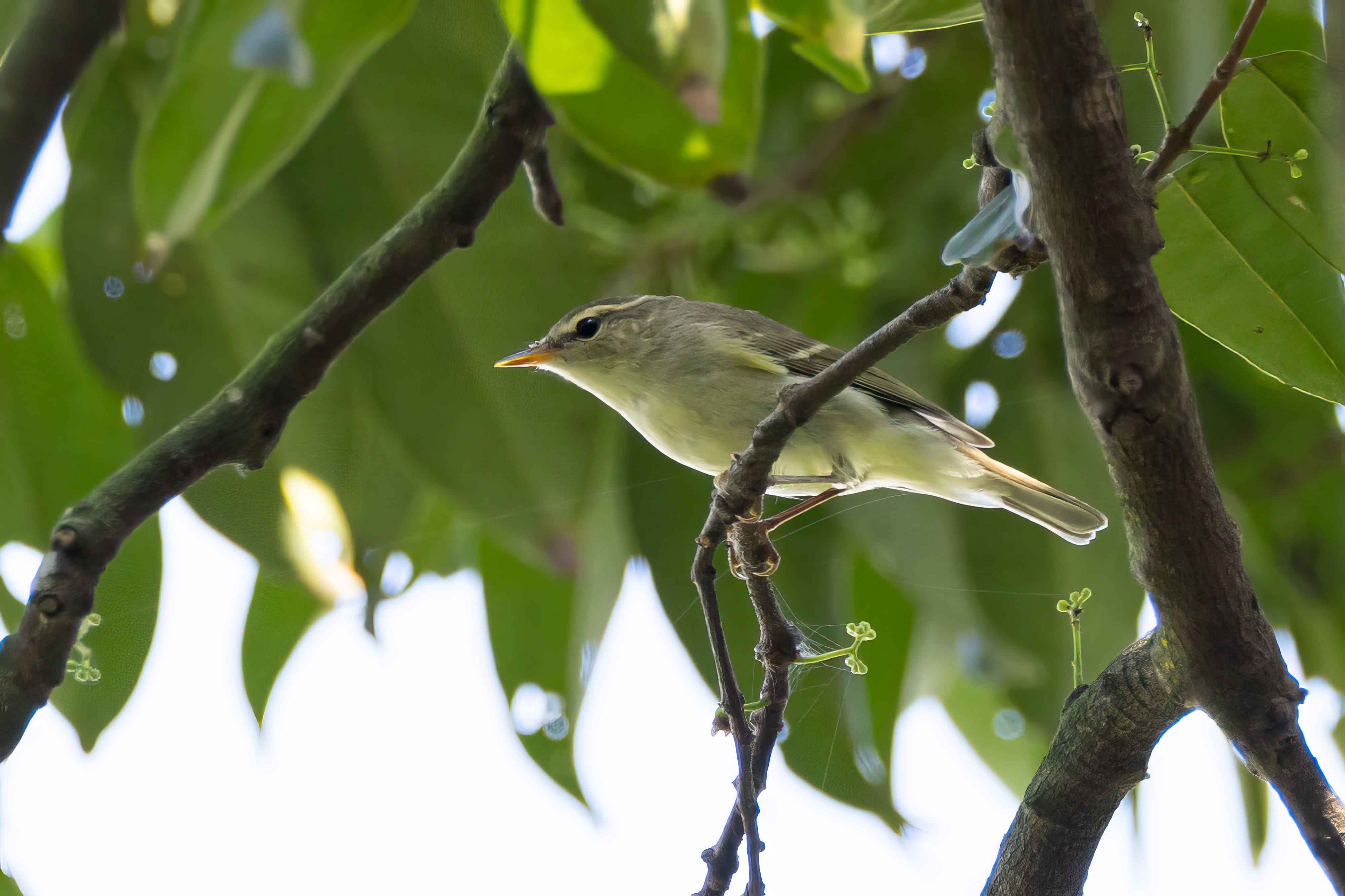Raghav Narayanswamy
On 5 May 2024, Frank Rheindt discovered Singapore’s first record of the Two-barred Warbler Phylloscopus plumbeitarsus at Kent Vale. The excellent photographs of this bird, but more importantly the audio recordings of its call and song, eventually left no doubt as to its identification.

This photo captures all the features which immediately rule out the other leaf warbler species previously recorded in Singapore, as shown in the table below. The combination of a broad wingbar, no crown stripe, dark legs, small bill, and clean ear-coverts, is not matched by any of these species, of which the Arctic Warbler comes closest in appearance. Remarkably, this photo also captures the length of the outermost primary feather – clearly much longer than the primary coverts; in Arctic Warbler, they hardly extend beyond the primary coverts (van der Vliet et al., 2001).
| Species | Excluded by |
| Yellow-browed Warbler P. inornatus | Indistinct wingbar across median coverts, olive upperparts, slimmer build with longer tail |
| Dusky Warbler P. fuscatus | Broad wingbar, olive upperparts |
| Eastern Crowned Warbler P. coronatus | Absence of crown stripe, clean underparts with no yellow vent |
| Sakhalin Leaf Warbler P. borealoides | Dark legs |
| Pale-legged Leaf Warbler P. tenellipes | Dark legs |
| Arctic Warbler P. borealis | Dark legs, small bill, clean ear-coverts, long outermost primary |
After excluding the species known to occur in Singapore based on plumage, the species present in the region that are visually similar to the Kent Vale bird – Two-barred Warbler, Green Warbler P. nitidus, and Greenish Warbler P. trochiloides – can be safely separated on vocalizations, particularly the call (Irwin, 2000; van der Vliet et al., 2001). Although plumage characters support the identification as well, especially for the Green Warbler which is particularly distinctive, these are not discussed here (see van der Vliet et al. [2001]). Fortunately, the bird was vocal, and allowed for several call and song recordings.
Of these three species, Two-barred has the most varied call vocabulary, while Green Warbler has a particularly consistent call.

All these calls are complex trisyllabic-sounding calls, ruling out Greenish Warbler which has a simpler, shorter call with fewer discernible inflections on the sonogram. While the calls of Two-barred and Green Warbler can be similar in their overall structure, the frequency range of individual calls are narrower in Two-barred. The calls highlighted in the sonograms above are all consistent with Two-barred, particularly resembling calls (b) and (f) from van der Vliet et al. (2001). The subtle differences can be better seen on the sonograms, so it may be easier to download the audio files from xeno-canto embedded below and view them offline on Audacity or similar.
Vocalizations are often useful in identification of difficult species complexes, as we’ve touched on here before, and this is especially the case in the Phylloscopus leaf warblers. Given the rarity of Two-barred Warbler in Singapore, and the effect of feather wear on plumage, photographs will almost certainly need to be supplemented with audio recordings for reliable identification of this species. This is particularly to exclude Greenish Warbler.
The Two-barred Warbler is a long-distance migrant breeding in eastern Siberia and wintering in Indochina to central Thailand. Vagrancy has been recorded in Peninsular Malaysia and Malaysian Borneo (MNSBCC, 2020). As a rather ‘expected’ wild vagrant to Singapore, the species is now placed in Category A of the Singapore Bird Checklist. Perhaps with greater awareness of the identification features, more will be found in the years to come – as we have already seen with White-throated Needletail Hirundapus caudacutus and Brown-streaked Flycatcher Muscicapa williamsoni, among others.

Acknowledgments
We thank all observers who posted their photos and audio recordings online to enable the identification. Francis Yap, Jared HJ Tan, Oliver Tan, and Vincent Yip graciously contributed photos and audio recordings for this article.
References
Irwin, D. E. (2000). Song variation in an avian ring species. Evolution, 54(3), 998. https://doi.org/10.1554/0014-3820(2000)054[0998:sviaar]2.3.co;2
Malaysian Nature Society Bird Conservation Council. (2021). A Checklist of the Birds of Malaysia. 2020 Edition. Link
van der Vliet, R. E., Kennerley, P. R., & Small, B. J. (2001). Identification of Two-barred, Greenish, Bright-green and Arctic Warblers. Dutch Birding, 23, 175–191.
